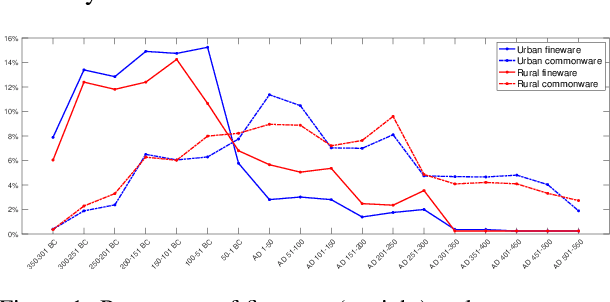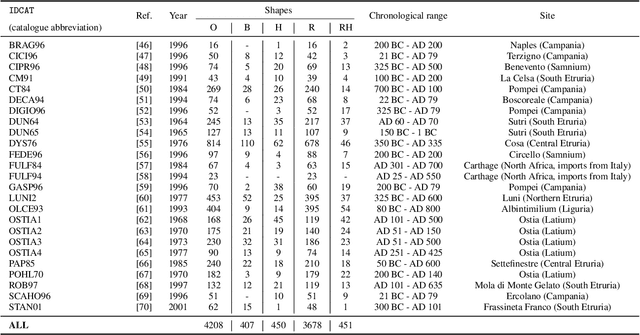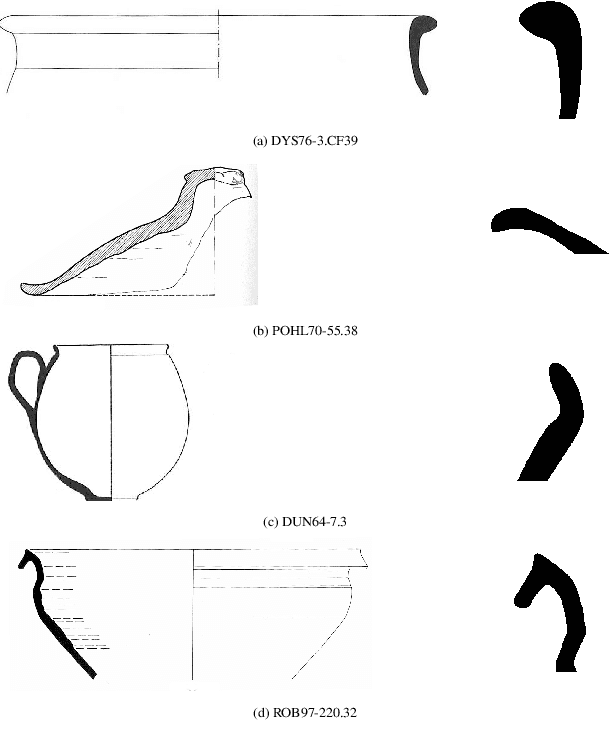Unsupervised Clustering of Roman Potsherds via Variational Autoencoders
Paper and Code
Mar 14, 2022



In this paper we propose an artificial intelligence imaging solution to support archaeologists in the classification task of Roman commonware potsherds. Usually, each potsherd is represented by its sectional profile as a two dimensional black-white image and printed in archaeological books related to specific archaeological excavations. The partiality and handcrafted variance of the fragments make their matching a challenging problem: we propose to pair similar profiles via the unsupervised hierarchical clustering of non-linear features learned in the latent space of a deep convolutional Variational Autoencoder (VAE) network. Our contribution also include the creation of a ROman COmmonware POTtery (ROCOPOT) database, with more than 4000 potsherds profiles extracted from 25 Roman pottery corpora, and a MATLAB GUI software for the easy inspection of shape similarities. Results are commented both from a mathematical and archaeological perspective so as to unlock new research directions in both communities.
 Add to Chrome
Add to Chrome Add to Firefox
Add to Firefox Add to Edge
Add to Edge